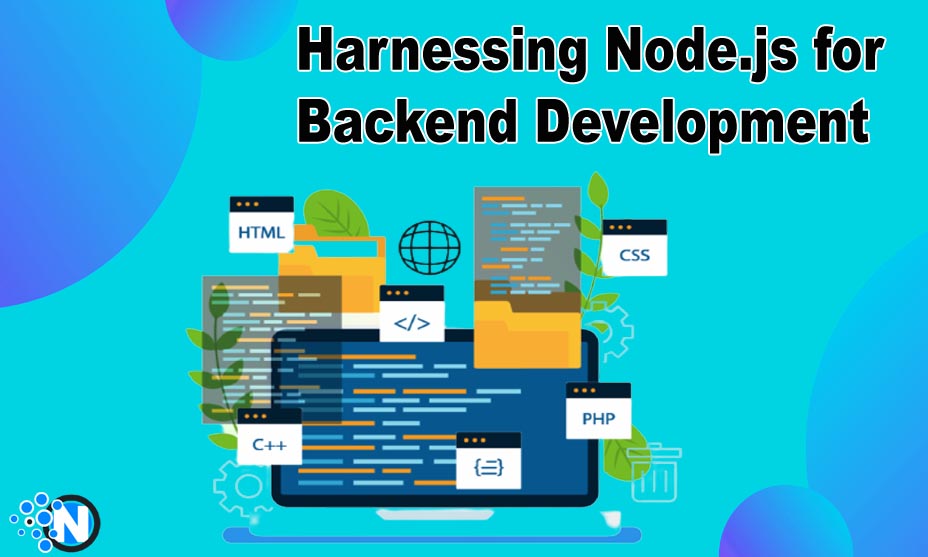Level Up Your Web Apps: Harnessing Node.js for Backend Development
Do you want to level up your web apps? In this case, we have a great instrument for you. Node.js is a perfect platform for strong integration between your front and back end. This framework is notable for allowing JavaScript to develop your apps’ server side. This article provides a high-level overview of Node.js, makes comparisons to other platforms, and explains the circumstances under which Node.js fails as a development environment. We also suggest this link if you’re looking for Node.js development firms: https://keenethics.com/services-web-development-node
Node.js: The Hottest Trend in Programming
In our opinion, Node.js is the hottest trend in programming. Why? Because this framework enables the development of high-quality apps specifically for the web. Multiple Internet-centric businesses with great reputations actively use Node.js these days. What are those? The largest video streaming service, Netflix, uses Node.js to enable video on demand. Secondly, many payments on the Internet involve Node.js because PayPal and eBay are actively using them for a banking service and a trading platform, respectively. Lastly, every Uber user also encountered Node.js: the company actively uses it and Go for developing its ride-hailing platform. In short, some of the market’s largest and most innovative businesses are using this. Are you ready to join them too?
Node.js vs. PHP, Python, and More:

What key characteristics make Node.js unique compared to platforms such as PHP and Python? Let’s review the following:
JavaScript Development in the Backend
Upon appearing, JavaScript always was a platform aimed at front-end development. Developers can create servers by utilizing this language scripting software. Why is this important? Such an approach allows the creation of full-stack sites fully in JavaScript. In this light, Node.js is notable for making JavaScript as robust as PHP and Python.
Asynchronous and Single-threaded:
The majority of programming languages and accompanying platforms are sequence-oriented and multithreaded. Node.js goes against this trend: it works with single threads but enables the ability to launch code in a non-sequential way. What does this mean? Instead of executing all core parts of an app, it can prioritize internal parts first and only then load the core modules. This approach allows the platform to minimize resource usage and load only those crucial elements for the users. Other platforms require significant knowledge and additional modules to enable such a scenario. Node.js offers asynchronous single-threaded tools by default.
When NOT to Use Node.js
Any person with knowledge of computing has likely already noticed that Node.js is single-threaded. This approach is the key problem of the platform. On the one hand, it’s great for small tasks, such as video streaming or, for example, ride-hailing requests. Why? Because they aren’t too difficult for a single core, and the asynchronous framework allows multiple connections.
On the other hand, any complex piece of code that requires a lot of processing power immediately becomes an issue. Intel and AMD created multicore processors because they allow the processing of something advanced. Node.js can’t use this power. If you need to process 3D objects or calculate information in a spreadsheet, Node.js creates major challenges for developers. It’s a great platform for services with small user requests but fails at something that needs multiple threads for success.
Real-Time Applications with WebSockets:
One of its most notable features is its support for real-time communication between clients and servers through WebSockets.Node.js is a helpful tool for creating fun applications like chat programs, teamwork tools, and online games. This is possible because of WebSockets, which allow fast and two-way communication, making everything run smoothly. It is ideally suited for use in high-throughput, concurrent-connection real-time applications because of its event-driven architecture.
Scalability with Event Loop and Non-Blocking I/O:
Node.js follows an event-driven, non-blocking I/O architecture, which grants it exceptional scalability. Unlike older platforms that use multithreading to manage multiple requests, it utilizes a single-threaded event loop. Node.js can efficiently handle many connections simultaneously without slowing down. This is why it is often preferred for applications with numerous users and high traffic.
Microservices Architecture with Node.js:
In particular, it shines as a platform upon which to construct microservices-based infrastructures. Developers can improve maintainability, scalability, and flexibility by decomposing a monolithic application into smaller, modular services. The speed and efficiency of Node.js is a great fit for the microservices architecture, which encourages teams to work on developing, deploying, and scaling their services separately.
Performance and Caching:
When it comes to handling a significant number of small, short-lived requests, Node.js excels. Its ability to quickly process lightweight requests and cache frequently used data can drastically improve response times, leading to a more fluid user experience. This performance boost is especially beneficial for content-heavy websites and applications with multiple users accessing similar resources.
Server-Side Rendering (SSR) and Search Engine Optimization (SEO):
Node.js is popular for implementing server-side rendering (SSR) in web applications. SSR allows search engines to crawl and index dynamic content effectively, leading to better search engine rankings and improved SEO. By leveraging Node.js for SSR, developers can balance modern client-side interactivity and search engine visibility.
When to Consider Alternatives:
Heavy Computation and CPU-Intensive Tasks: Node.js’ single-threaded nature can be a drawback when dealing with CPU-intensive tasks or heavy computation. Although Node.js can delegate some tasks to worker threads, languages like Python or Java might be more suitable for scenarios requiring leveraging multicore processors’ full potential.
Machine Learning and Data Science Applications: For machine learning and data science applications that involve complex mathematical computations and large datasets, Python remains a popular choice due to its rich ecosystem of libraries and frameworks tailored to these tasks.
Conclusion
In summary, the information presented indicates that Node.js is one of the most advanced platforms for web development in today’s era. If you are looking for a site or app that offers small services to numerous individuals, then Node.js is the ideal platform to use. If you are searching for a Node.js development company, you may want to consider the services of Keenethics, which has over eight years of experience in Node.js and JavaScript web development.





I was recommended this web site through my cousin. I’m now not certain whether or not this post is written by way of him as nobody else understand
such specific about my trouble. You’re wonderful!
Thanks!
Good day! I could have sworn I’ve been to this blog before but after
reading through some of the post I realized it’s new to me.
Anyhow, I’m definitely happy I found it and I’ll be book-marking and checking back often!